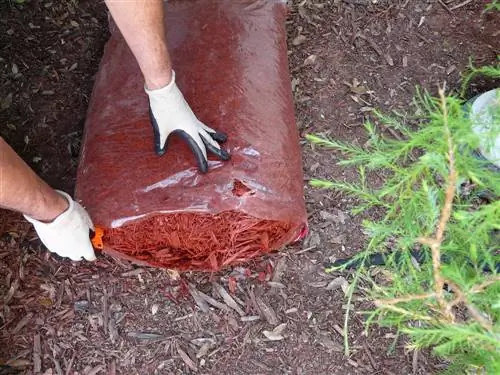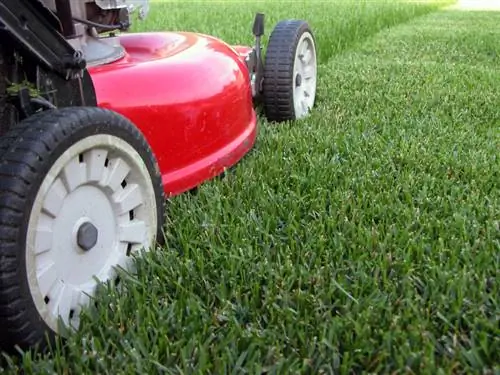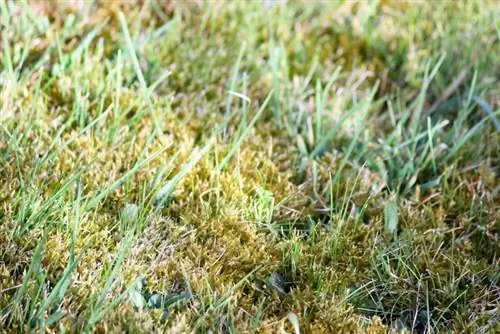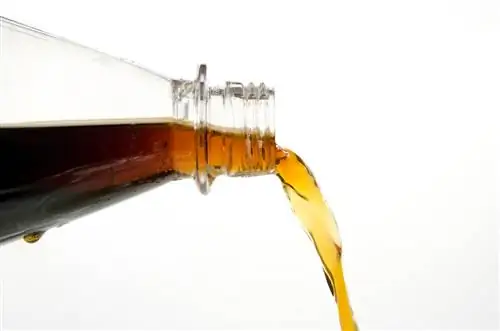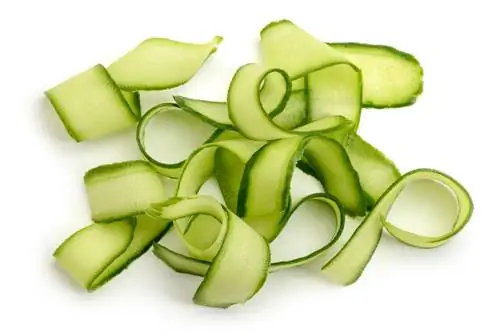- Author admin [email protected].
- Public 2023-12-16 16:46.
- Last modified 2025-01-23 11:21.
Mulching is becoming increasingly important in lawn care. The crop is chopped into small pieces and distributed over the area. Although this method is controversial, its advantages outweigh the disadvantages. However, mulching against moss is not suitable for every location.
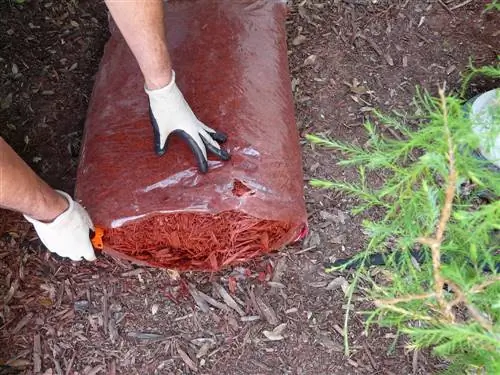
Can mulching help against moss in the lawn?
Mulching against moss can help to make the lawn resilient and competitive by regularly supplying shredded cuttings by returning nutrients in optimal quantities. However, this method is only suitable for dry soils where the mulch layer rots quickly.
Species shift when mowing without mulching
Seed mixtures for the garden consist largely of seeds of the meadow panicle (Poa pratensis) and other types of grass that create a lawn that can be walked on. Regular mowing removes nutrients from the lawn. The plants have to draw additional nutrients from the soil to regenerate. If there are not enough nutrients in the substrate, the species composition shifts towards more competitive plants. Dominant sweet grasses such as red fescue (Festuca rubra) or bentgrass (Agrostis) push back the meadow panicle.
The species shift on the grass reduces its resilience. Meadow panicles form dense carpets of grass that are easy to step on. An area with red fescue and bentgrass is more sensitive to such stresses. Gaps appear in the lawn and the fresh shade of green fades. Thatch formation is particularly high in bentgrass lawns. Mosses have the best growing conditions here.
Benefits of Mulching
The regular supply of cuttings increases the proportion of organic matter on the soil. This promotes the activity of soil organisms, which at the same time can reproduce well under optimal temperature conditions. They release nutrients from the biological material and make them available to plants. Regular mulching ensures resistance and competitiveness. The grasses benefit from the nutrients, which are available in an optimal proportion. The lawn grows splendidly and increases its resilience. At the same time, nutrient recycling prevents the spread of mosses, because these organisms prefer a nutrient-poor substrate.
Other benefits:
- Improving soil structure
- Evaporation protection in summer
- more cost-effective than commercial fertilizer
- no additional fertilizing necessary
Not suitable for every location
This form of nutrient recycling is only suitable for dry soils where the mulch layer rots quickly. Fewer soil organisms live in sandy soils than in nutrient-rich soils, which is why the mulch layer only rots very slowly. Moisture builds up on heavy soils with poor water permeability, which negatively affects the rotting processes. The same applies to lawns in shady locations. Mulching only makes sense in these locations if you pay attention to dry weather and shorten the lawn to two centimeters beforehand.

